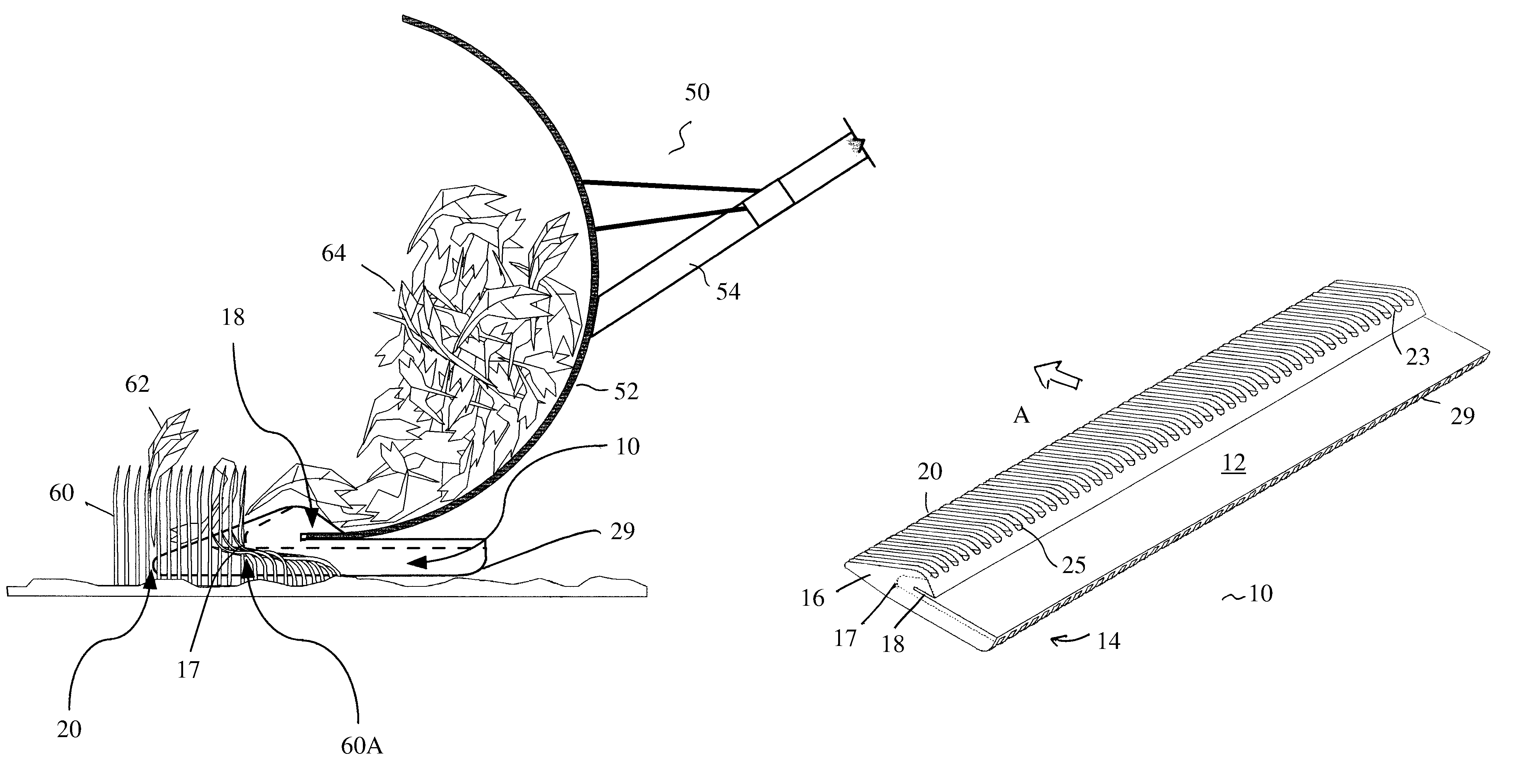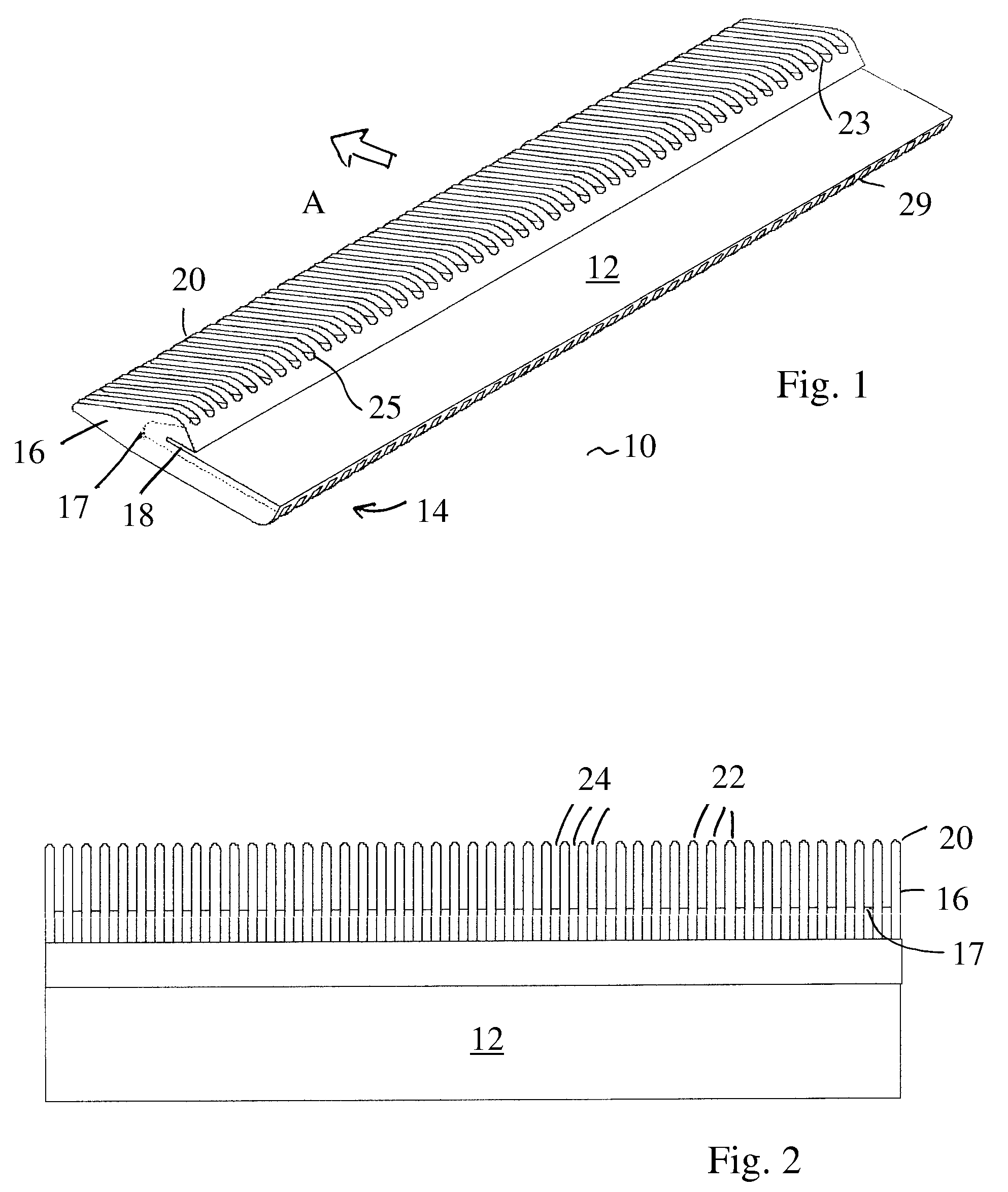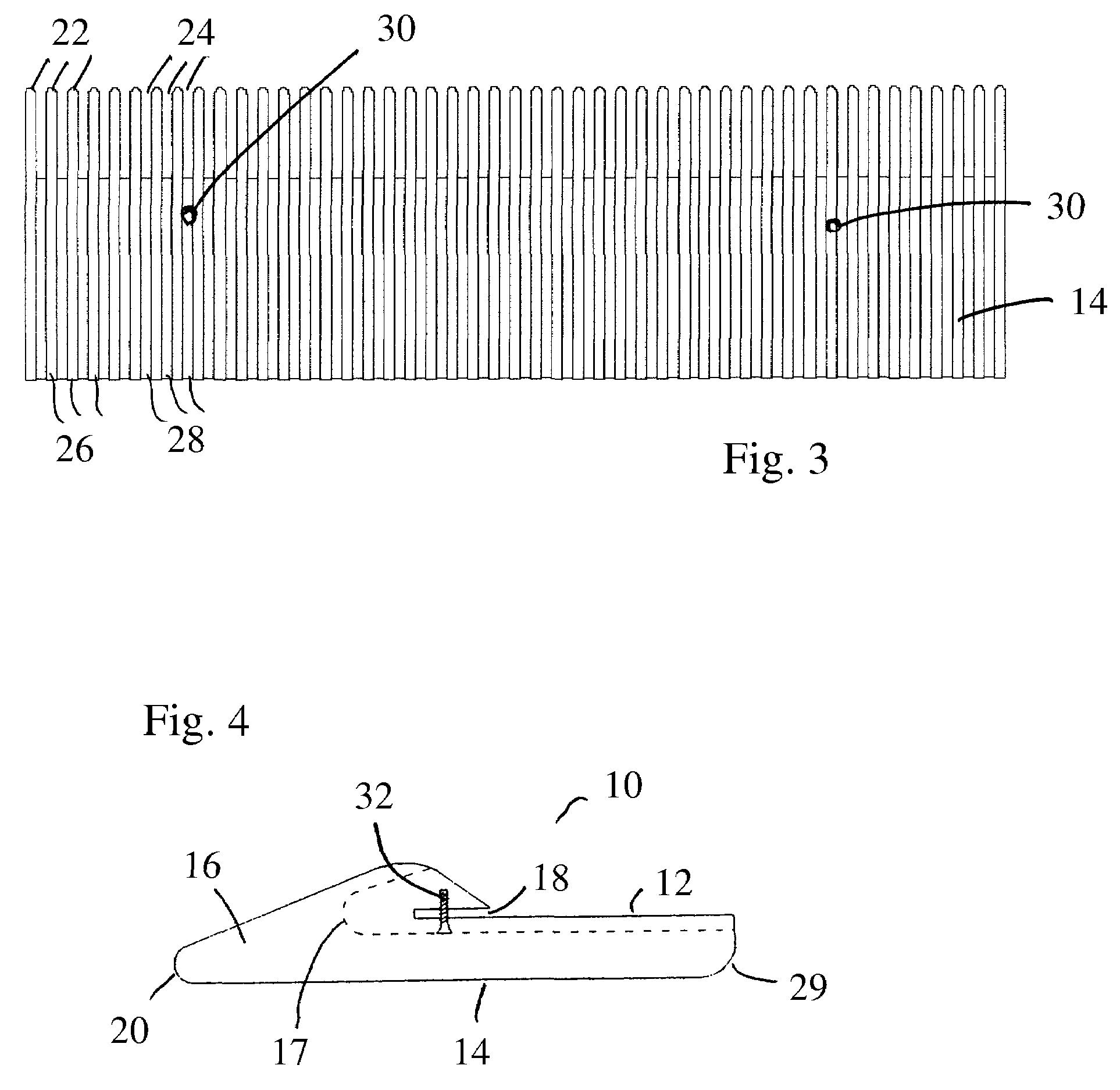Lawn maintenance device having wedge-shaped front section
a maintenance device and front section technology, applied in the field of lawn maintenance devices, can solve the problems of damage to the lawn, no prior methods of disposing of leaves and similar debris have met with complete success, and the raking task is labor-intensive and physically demanding, so as to achieve the effect of collecting and pushing
- Summary
- Abstract
- Description
- Claims
- Application Information
AI Technical Summary
Benefits of technology
Problems solved by technology
Method used
Image
Examples
Embodiment Construction
[0018]Unless otherwise specifically noted, all of the features described herein may be combined with any of the above aspects, in any combination. Also, when used throughout this disclosure, relative terms such as “front”, “back”, “upper” and “lower” are generally used to describe the device, or the like, when positioned and / or used in its normal operating position.
[0019]A key feature of the present invention is that it transforms a simple push shovel into an efficient “push rake”. When the push shovel is compared to a standard shovel, it is known to function with greater speed and efficiency. The device of the present invention, performs with the same if not with greater efficiency when compared to a standard rake. When compared with snow, leaves are much lighter and larger in particle size. Therefore the pile of leaves and debris collected at the front of the device can be moved with much less effort than with a standard rake or a leaf blower, which becomes overwhelmed by larger p...
PUM
 Login to View More
Login to View More Abstract
Description
Claims
Application Information
 Login to View More
Login to View More - R&D
- Intellectual Property
- Life Sciences
- Materials
- Tech Scout
- Unparalleled Data Quality
- Higher Quality Content
- 60% Fewer Hallucinations
Browse by: Latest US Patents, China's latest patents, Technical Efficacy Thesaurus, Application Domain, Technology Topic, Popular Technical Reports.
© 2025 PatSnap. All rights reserved.Legal|Privacy policy|Modern Slavery Act Transparency Statement|Sitemap|About US| Contact US: help@patsnap.com



